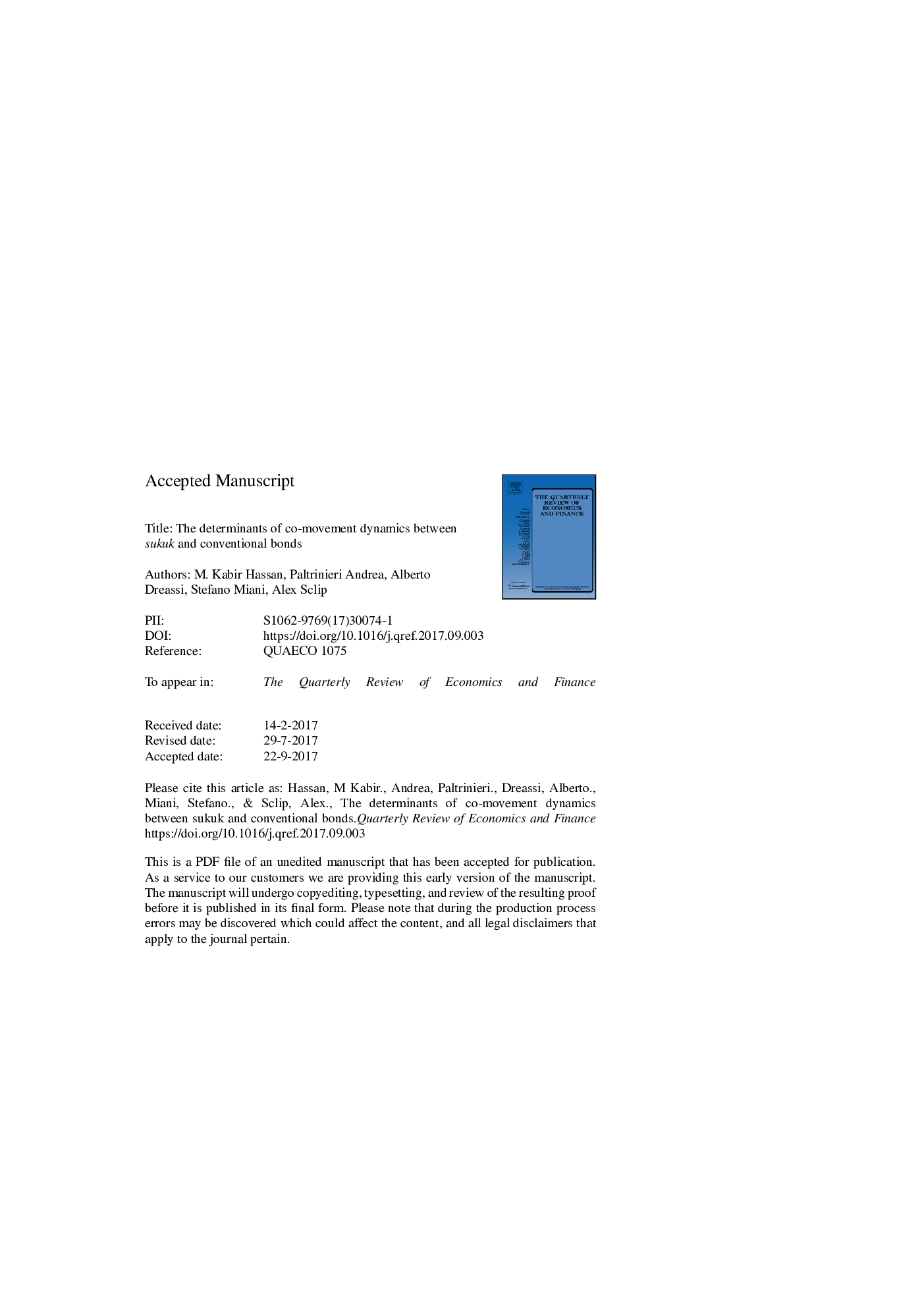| Article ID | Journal | Published Year | Pages | File Type |
|---|---|---|---|---|
| 7383363 | The Quarterly Review of Economics and Finance | 2018 | 47 Pages |
Abstract
This paper adopts a multivariate GARCH framework to examine conditional correlations and volatility linkages between sukuk (Islamic bonds) and conventional bond markets in Europe, the United States, and emerging markets. We find that sukuk and conventional investment-grade bonds have a lower reaction of conditional volatility to market shocks and higher persistence; we also find that sukuk returns are much less volatile than U.S. and EU investment-grade bonds. Further, we find a time-varying, positive, conditional correlation between sukuk returns and leading bond markets, which is driven by changing macroeconomic and market conditions. We observe that during recessions, the dynamic correlation between sukuk and bond markets tends to increase. Moreover, we unveil structural breakpoints in paths of dynamic correlations corresponding to external shocks, such as the sovereign debt crisis and the Federal Reserve's tapering announcements. Finally, we examine how market-wide factors affect correlations. We find significant behavioral shifts in the sukuk-bonds relationship, which are explained by market liquidity, crude oil prices, U.S. credit information, and stock market uncertainty. Our results have useful implications for sukuk issuers, portfolio managers, and risk managers in both emerging and developed markets.
Keywords
Related Topics
Social Sciences and Humanities
Economics, Econometrics and Finance
Economics and Econometrics
Authors
M. Kabir Hassan, Andrea Paltrinieri, Alberto Dreassi, Stefano Miani, Alex Sclip,
